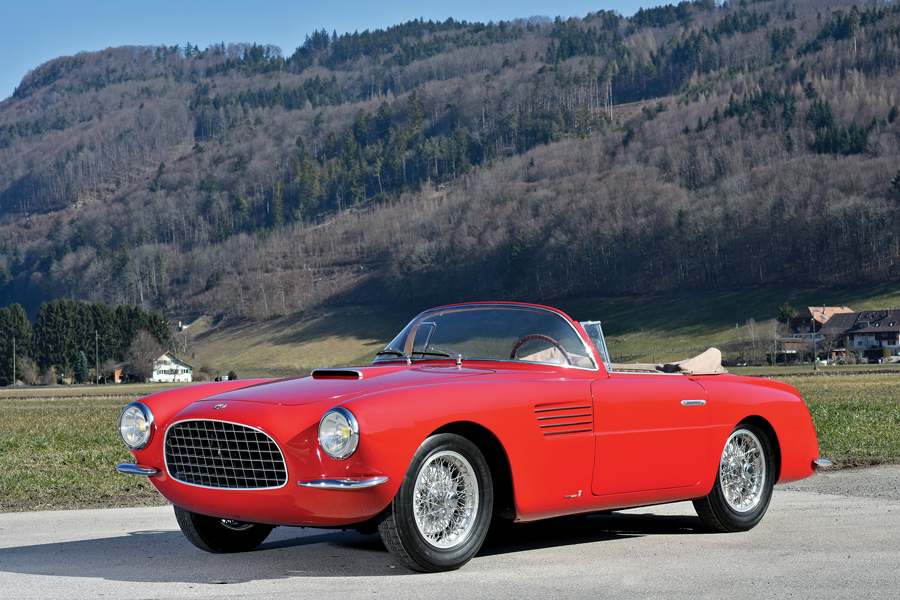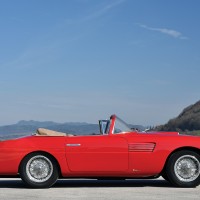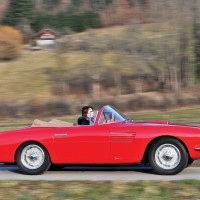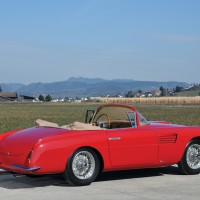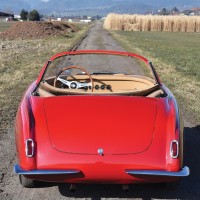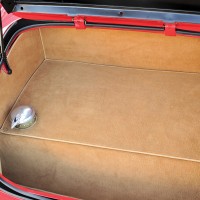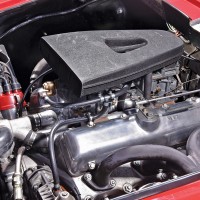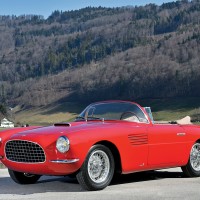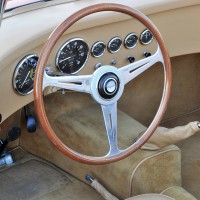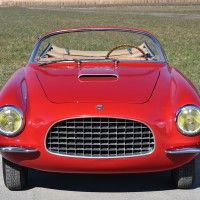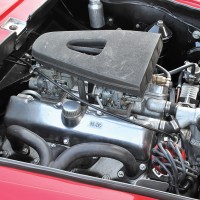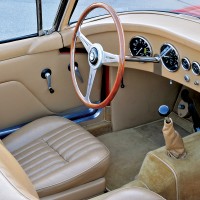SCM Analysis
Detailing
| Vehicle: | 1953 Fiat 8V Cabriolet by Vignale |
| Years Produced: | 1952–54 |
| Number Produced: | 114 (all Fiat-branded 8Vs) |
| SCM Valuation: | $550,000–$1,200,000 (custom coachwork) |
| Tune Up Cost: | $400–$600 |
| Distributor Caps: | $800 |
| Chassis Number Location: | On firewall and on chassis plate |
| Engine Number Location: | On cylinder block, distributor side on boss |
| Alternatives: | 1953 Maserati A6G/2000 Spyder, 1953 Lancia B52 PF200 cabriolet, 1953–55 Aston Martin DB2/4 Bertone Spyder |
| Investment Grade: | B |
This car, Lot 132, sold for $1,254,400 (€1,120,000), including buyer’s premium, at the RM Sotheby’s Villa Erba, Cernobbio, Italy, sale on May 23, 2015.
Reviewing this car presents a bit of a challenge for me. I love the Fiat 8V. For me every variation — the factory-bodied coupe designed by Luigi Rapi, the Zagato coupes, Ghia Supersonics, Vignale one-offs, Siata roadsters and coupes — has its particular charms.
Yet the work I do, whether writing this column, performing an appraisal or consulting for a client, requires me to categorize and rate a car in all the attributes that contribute to value. Those include design, originality, condition and provenance. I live with the objective results of that analysis — no matter how I might feel emotionally.
On that point, emotion, this car scored an immediate knockout. I was completely taken by it the moment I caught a glimpse of it sitting beside Lake Como at the Villa Erba. Everyone else I saw and spoke with there loved the car as well.
But this didn’t mean that wanted to list my loved ones for sale on eBay to raise the funds to buy it right away. Why?
Not what it once was
Any restoration involves making decisions about the moment in a vehicle’s history that the restorer and the owner will re-create. Many choices can be justified, but they all must have a point of origin, a consistent point of view and defensible credibility.
The catalog stated that at some point in its life the car lost its Fiat V8, something not uncommon for many that ended up in the United States. It most likely picked up a new small-block American engine and also along the way lost its distinctive front bumper, which wrapped across the top of the grille opening. The original dashboard and instrument cluster were changed as well.
While the Yankee lump was undoubtedly easier to maintain and almost certainly more reliable given the local service options, the loss of the bumper and the addition of the “California Custom” dashboard, with its random assortment of anonymous gauges, were not improvements. Of course, all you bumper-haters out there can compose your angry emails to SCM HQ now — I promise to answer each one individually.
The wrong paint job
When rescued and restored, the rather dull and predictable red-over-tan color scheme that was chosen seems to have done this wonderfully detailed shape no favors either.
I was standing next to the car during the preview with an SCMer who owns and has owned quite a few 8Vs. We agreed at once that the subtle rear fins should be picked out in a contrasting or complementary color. Sure enough, Tony Adriaensens’ essential book Otto Vu shows a period photo of this car when new, taken at the Parco Valentino in Turin, in a two-tone paint finish. There it sits in its original creamy white with the delicate fins painted either green or blue — a tonal variation of the interior color.
As it sat on sale day, the paint, bright trim and upholstery appeared to have been done to a very good level — not international concours level, but more than presentable for every other occasion. This is another shame, as it seems senseless to have to re-do such recently done work. Nevertheless, the car deserves to be brought to a much more correct level because it is a very special vehicle — one of very few Fiat-badged 8Vs originally built as an open car.
A mixed report card
So how would I rate this 8V rate on the attributes listed at the top of this article?
On design, full marks can’t be given because I think the original front end is key to the integrity of the look, and a further deduction is taken for the Cal Custom dashboard. Those two aspects also factor into the originality score. If the car still had an American V8 engine — preferably the one that had been fitted immediately after the Fiat engine — an argument could be made that the frontal and interior alterations were a consistent match with the history and life of the car. But reinstalling a Fiat 8V engine renders that argument moot.
Condition is an area in which the car scores higher, as I’ve mentioned before. The car is well — if not superbly — restored. Finally, it has numerous gaps in the provenance, which help me lean towards a restoration of the car in its as-delivered state over celebrating its lost years.
The right restoration away from world class
At the price sold, it would seem as if the new owner considers the car done — as it brought a full retail number. Its rarity and beauty overcame the challenges of the replacement engine and cosmetic alterations.
However, I hope that the new custodian simply decided that if he or she wanted the one and only Vignale 8V cabriolet, any price was the right one — and that it was simply the entry fee for the restoration this car so rightly deserves. I will jump out onto a limb here and declare that it is not impossible that the new owner might not actually be very far — if at all — underwater after spending what it will take to bring this car back to its original look and taking a few major concours prizes. ♦
(Introductory description courtesy of RM Sotheby’s.)
